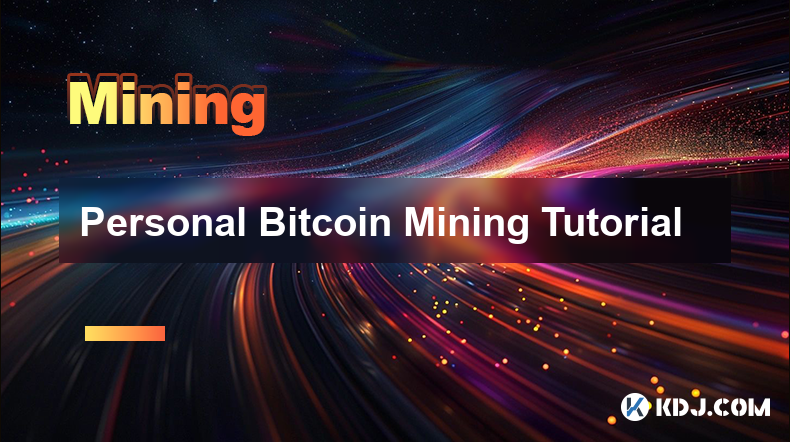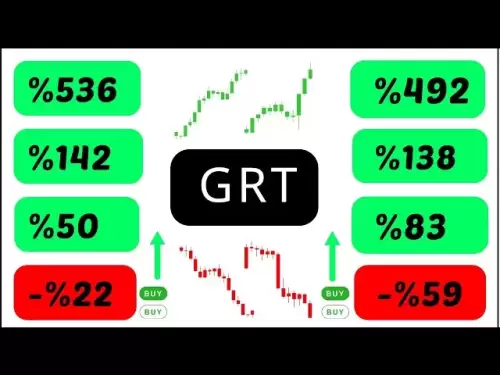-
 Bitcoin
Bitcoin $107,467.9126
1.26% -
 Ethereum
Ethereum $2,447.5288
-0.12% -
 Tether USDt
Tether USDt $1.0005
0.00% -
 XRP
XRP $2.1921
0.13% -
 BNB
BNB $647.2897
0.50% -
 Solana
Solana $144.8627
-0.37% -
 USDC
USDC $0.9996
-0.03% -
 TRON
TRON $0.2732
0.10% -
 Dogecoin
Dogecoin $0.1652
-0.18% -
 Cardano
Cardano $0.5700
-2.87% -
 Hyperliquid
Hyperliquid $37.0274
-1.81% -
 Bitcoin Cash
Bitcoin Cash $484.6957
0.19% -
 Sui
Sui $2.7354
-2.19% -
 Chainlink
Chainlink $13.1727
-1.49% -
 UNUS SED LEO
UNUS SED LEO $8.9978
-0.04% -
 Stellar
Stellar $0.2421
-2.33% -
 Avalanche
Avalanche $17.5633
-3.51% -
 Toncoin
Toncoin $2.8476
-1.94% -
 Shiba Inu
Shiba Inu $0.0...01166
-0.56% -
 Litecoin
Litecoin $85.1071
0.09% -
 Hedera
Hedera $0.1502
-2.96% -
 Monero
Monero $310.2774
-1.64% -
 Dai
Dai $0.9999
-0.01% -
 Polkadot
Polkadot $3.3584
-1.88% -
 Ethena USDe
Ethena USDe $1.0003
-0.04% -
 Bitget Token
Bitget Token $4.4443
2.90% -
 Pi
Pi $0.6242
14.04% -
 Uniswap
Uniswap $6.9774
-2.86% -
 Pepe
Pepe $0.0...09535
-5.05% -
 Aave
Aave $256.7574
-3.35%
Personal Bitcoin Mining Tutorial
Bitcoin mining operates on the principle of collective transaction verification and block creation, with miners deriving rewards in the form of Bitcoin for their computational contributions.
Jan 10, 2025 at 03:07 pm

Key Points
- Understanding the Basics of Bitcoin Mining
- Setting Up Your Mining Hardware
- Joining a Mining Pool
- Monitoring and Tweaking Your Operation
- Troubleshooting Common Issues
- Profitability Considerations
- Future Trends
Personal Bitcoin Mining Tutorial
Step 1: Understanding the Basics of Bitcoin Mining
- The fundamental principle of Bitcoin mining is its distributed and decentralized nature, with miners collectively verifying and adding transactions to the blockchain.
- Miners play a crucial role in the network's security by solving complex mathematical problems to validate transactions and generate new blocks.
- The computational power required for mining, known as hash rate, is the backbone of the network's resilience against malicious activities.
- The block reward, a pre-determined amount of Bitcoin, incentivizes miners to participate in the process.
Step 2: Setting Up Your Mining Hardware
- Application-Specific Integrated Circuits (ASICs) are specialized computers designed for efficient bitcoin mining.
- ASICs vary in performance and energy efficiency, so research and choose one that meets your needs and budget.
- Proper cooling and ventilation are essential for maintaining optimal performance and extending the lifespan of your hardware.
- Choose a reliable power supply unit (PSU) with sufficient wattage to handle the hardware's power requirements.
- Ensure adequate network connectivity for the smooth operation of the mining equipment.
Step 3: Joining a Mining Pool
- Solo mining, where a single miner attempts to find blocks independently, has become challenging due to the immense hash rate required.
- Mining pools aggregate the hash power of multiple miners, increasing the likelihood of finding blocks and earning rewards.
- Research and select a reputable mining pool based on fees, pool size, and payout methods.
- Join the pool and configure your mining software to connect to the pool's server.
Step 4: Monitoring and Tweaking Your Operation
- Regularly monitor your mining activity through pool websites and software dashboards.
- Track important metrics such as hash rate, uptime, and estimated earnings.
- Adjust hardware settings, such as clock speed and voltage, to optimize performance while balancing power consumption.
- Experiment with different mining software or firmware versions to identify the ones that maximize efficiency.
- Keep up-to-date with industry trends and technology advancements to ensure your operation remains competitive.
Step 5: Troubleshooting Common Issues
- Hardware malfunctions can occur, so be prepared to diagnose and resolve potential issues.
- Overheating, power supply failures, and network connectivity problems are common hurdles.
- Ensure proper cooling, inspect cables and connections, and restart devices if necessary.
- Research specific error codes or consult online forums for troubleshooting assistance.
- Consider joining a mining community or seeking professional support for more complex issues.
Step 6: Profitability Considerations
- Bitcoin mining profitability fluctuates based on multiple factors, including block rewards, mining difficulty, and electricity costs.
- Use a mining calculator to estimate potential earnings and operating expenses.
- Consider your hardware's efficiency, hash rate, and power consumption when evaluating profitability.
- Factor in maintenance costs, pool fees, and potential fluctuations in the price of Bitcoin.
- Regularly assess your operation's profitability and adjust your strategy as needed.
Step 7: Future Trends
- The world of Bitcoin mining is continuously evolving, with advancements in technology and changes in regulatory landscapes.
- Renewable energy sources and sustainable mining practices are gaining traction.
- Cloud mining services offer an alternative to traditional mining with lower upfront costs and increased flexibility.
- Follow industry news and research to stay informed about the latest trends and potential developments.
FAQs
- What is hash rate?
Hash rate refers to the computational power of a miner or mining pool, measured in hashes per second. Higher hash rates increase the chances of finding blocks and earning rewards. - What are block rewards?
Block rewards are pre-defined amounts of Bitcoin that are awarded to miners for successfully discovering and adding blocks to the blockchain. - What is the block difficulty?
The block difficulty is a measure of how complex the mathematical problems are that miners need to solve to find blocks. The difficulty adjusts over time to ensure a relatively consistent rate of new block discoveries. - What is mining difficulty?
Mining difficulty refers to the complexity of the mathematical problems that miners need to solve to find blocks. The difficulty is adjusted secara berkala to ensure a consistent rate of new block discoveries. - What is the relationship between hash rate and profitability?
Hash rate plays a key role in determining profitability. Higher hash rates typically lead to higher chances of discovering blocks and earning rewards, but also require more energy consumption and operating costs.
Disclaimer:info@kdj.com
The information provided is not trading advice. kdj.com does not assume any responsibility for any investments made based on the information provided in this article. Cryptocurrencies are highly volatile and it is highly recommended that you invest with caution after thorough research!
If you believe that the content used on this website infringes your copyright, please contact us immediately (info@kdj.com) and we will delete it promptly.
- Meme Coins, Crypto Influencers, and Investment: Riding the Wave in 2025
- 2025-06-26 10:25:13
- NoviqTech, HYDI, and Carbon Credits: A Partnership Driving Sustainable Solutions
- 2025-06-26 10:25:13
- Litecoin (LTC) Price Forecast 2025: Bullish Reversal on the Horizon?
- 2025-06-26 10:55:12
- Trump, Crypto, and Stablecoins: A New York Minute on the Wild West of Digital Finance
- 2025-06-26 11:12:13
- Solana ETF, Crypto Investment, and Pudgy Penguins: Navigating the Hype in the NYC Crypto Scene
- 2025-06-26 11:30:12
- Solana ETF Race Heats Up: Invesco Galaxy Joins the Fray
- 2025-06-26 10:40:13
Related knowledge

What is liquidity mining in DeFi? How to participate and calculate the income?
Jun 20,2025 at 03:21pm
Understanding Liquidity Mining in DeFiLiquidity mining is a core concept in the decentralized finance (DeFi) ecosystem that allows users to earn rewards by providing liquidity to decentralized exchanges (DEXs) or lending platforms. In traditional finance, liquidity providers are usually institutional players, but DeFi democratizes this process, enabling...

What is the mining mechanism of digital currency? What hardware and cost investment are required?
Jun 23,2025 at 06:29am
Understanding the Mining Mechanism of Digital CurrencyThe mining mechanism of digital currency is a foundational process that ensures transaction validation and network security. In most Proof-of-Work (PoW) cryptocurrencies like Bitcoin, miners compete to solve complex mathematical puzzles using computational power. The first miner to find a valid solut...

Analysis of hybrid mining protocol: PoW+PoS hybrid profit calculation
Jun 23,2025 at 10:15am
Understanding Hybrid Mining ProtocolsIn the realm of blockchain technology, consensus mechanisms are pivotal in maintaining network integrity and transaction validation. A hybrid mining protocol combines two or more consensus algorithms to achieve a balance between security, decentralization, and energy efficiency. The most commonly adopted hybrid model...

How to operate option mining? Hedging strategy and profit structure
Jun 21,2025 at 03:29pm
What is Option Mining?Option mining refers to a decentralized finance (DeFi) strategy where participants provide liquidity or take specific derivative positions in options protocols to earn rewards. Unlike traditional yield farming, option mining often involves liquidity provision for options markets, allowing users to generate returns through premiums ...

What are the advantages of Layer2 mining? Gas saving and project inventory
Jun 20,2025 at 04:50am
Understanding Layer2 Mining and Its SignificanceLayer2 mining refers to the process of participating in decentralized applications or protocols that operate on top of a primary blockchain (such as Ethereum) using scaling solutions like Optimism, Arbitrum, or zkSync. Unlike traditional mining on Layer1 blockchains, which often involves high computational...

Is contract mining safe? Key points of smart auditing and vulnerability prevention
Jun 19,2025 at 08:08pm
Understanding Contract Mining in the Cryptocurrency SpaceContract mining refers to a method within blockchain ecosystems where users can participate in mining operations through smart contracts. Unlike traditional mining, which requires physical hardware and technical expertise, contract mining allows participants to invest funds into a mining pool or p...

What is liquidity mining in DeFi? How to participate and calculate the income?
Jun 20,2025 at 03:21pm
Understanding Liquidity Mining in DeFiLiquidity mining is a core concept in the decentralized finance (DeFi) ecosystem that allows users to earn rewards by providing liquidity to decentralized exchanges (DEXs) or lending platforms. In traditional finance, liquidity providers are usually institutional players, but DeFi democratizes this process, enabling...

What is the mining mechanism of digital currency? What hardware and cost investment are required?
Jun 23,2025 at 06:29am
Understanding the Mining Mechanism of Digital CurrencyThe mining mechanism of digital currency is a foundational process that ensures transaction validation and network security. In most Proof-of-Work (PoW) cryptocurrencies like Bitcoin, miners compete to solve complex mathematical puzzles using computational power. The first miner to find a valid solut...

Analysis of hybrid mining protocol: PoW+PoS hybrid profit calculation
Jun 23,2025 at 10:15am
Understanding Hybrid Mining ProtocolsIn the realm of blockchain technology, consensus mechanisms are pivotal in maintaining network integrity and transaction validation. A hybrid mining protocol combines two or more consensus algorithms to achieve a balance between security, decentralization, and energy efficiency. The most commonly adopted hybrid model...

How to operate option mining? Hedging strategy and profit structure
Jun 21,2025 at 03:29pm
What is Option Mining?Option mining refers to a decentralized finance (DeFi) strategy where participants provide liquidity or take specific derivative positions in options protocols to earn rewards. Unlike traditional yield farming, option mining often involves liquidity provision for options markets, allowing users to generate returns through premiums ...

What are the advantages of Layer2 mining? Gas saving and project inventory
Jun 20,2025 at 04:50am
Understanding Layer2 Mining and Its SignificanceLayer2 mining refers to the process of participating in decentralized applications or protocols that operate on top of a primary blockchain (such as Ethereum) using scaling solutions like Optimism, Arbitrum, or zkSync. Unlike traditional mining on Layer1 blockchains, which often involves high computational...

Is contract mining safe? Key points of smart auditing and vulnerability prevention
Jun 19,2025 at 08:08pm
Understanding Contract Mining in the Cryptocurrency SpaceContract mining refers to a method within blockchain ecosystems where users can participate in mining operations through smart contracts. Unlike traditional mining, which requires physical hardware and technical expertise, contract mining allows participants to invest funds into a mining pool or p...
See all articles
























































































